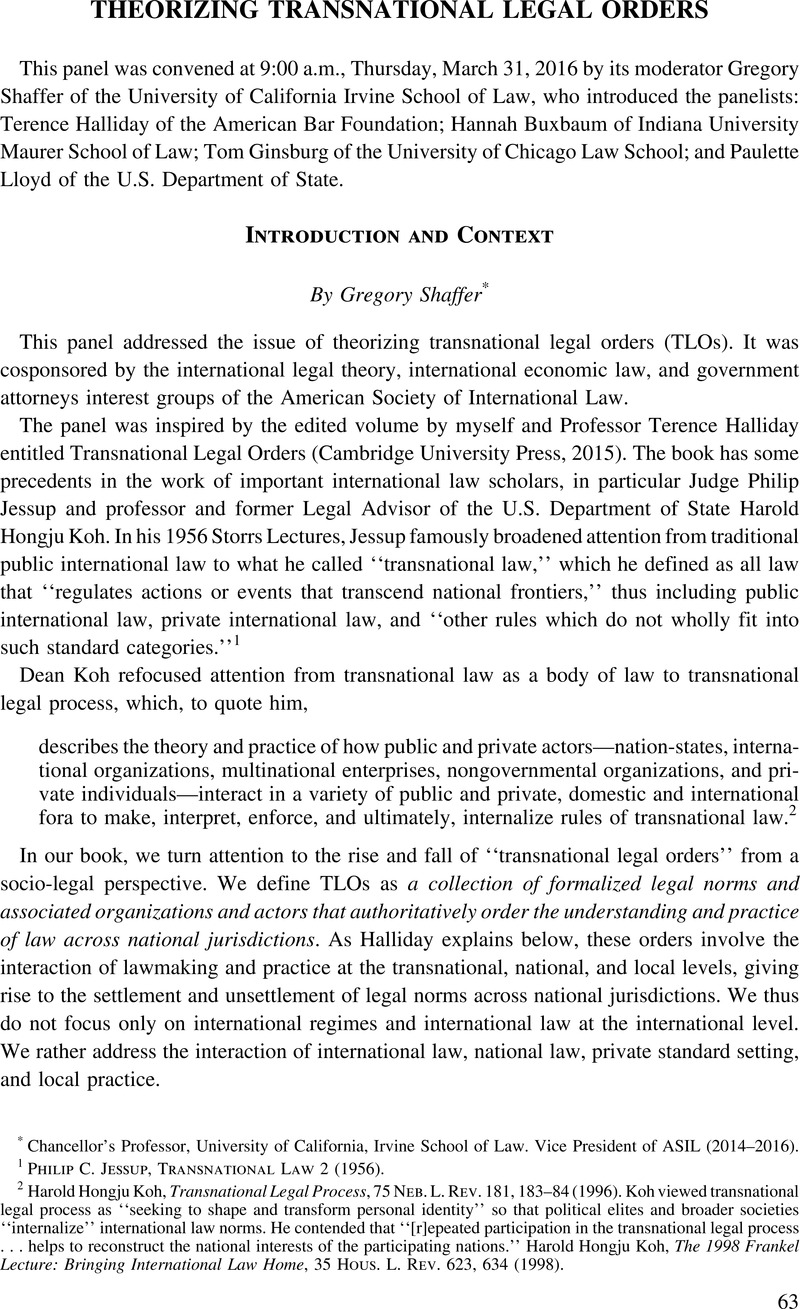No CrossRef data available.
Article contents
Introduction and Context
Published online by Cambridge University Press: 18 May 2017
Abstract

- Type
- Theorizing Transnational Legal Orders
- Information
- Copyright
- Copyright © American Society of International Law 2016
References
1 Philip C. Jessup, Transnational Law 2 (1956).
2 Koh, Harold Hongju, Transnational Legal Process, 75 Neb. L. Rev. 181, 183–84 (1996)Google Scholar. Koh viewed transnational legal process as “seeking to shape and transform personal identity” so that political elites and broader societies “internalize” international law norms. He contended that “[r]epeated participation in the transnational legal process … helps to reconstruct the national interests of the participating nations.” Koh, Harold Hongju, The 1998 Frankel Lecture: Bringing International Law Home, 35 Hous. L. Rev. 623, 634 (1998)Google Scholar.
3 For further discussion, see Terence C. Halliday & Gregory Shaffer, Transnational Legal Orders, in Transnational Legal Orders 21–28 (Terence C. Halliday & Gregory Shaffer eds., 2015).
4 For instance, a comprehensive review of regime theory published in 1997 by Hasenclever, et al. had no entry for “law” in the index, and the term “international law” is scarcely found in the entire text. See Andreas Hasenclever, Peter Mayer & Volker Rittberger, Theories of International Regimes (1997).


